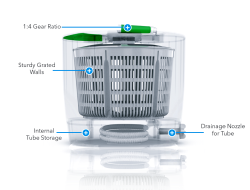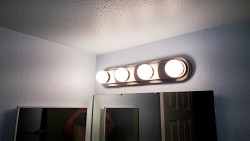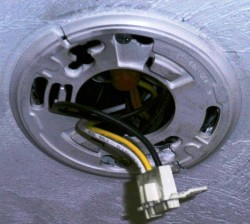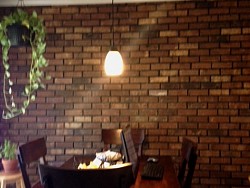How Much Does it Cost to Replace Knob and Tube Wiring?
Is your home equipped with obsolete knob and tube wiring? Uh-oh. You'd better plan on getting it replaced with a safer, more modern electrical system. The cost to replace knob and tube wiring is typically somewhere between $4,250 and $9,000+ for a 2-story home, and will increase about $2,000 for each additional story. When it comes to your electrical system, you can be saving a lot of time, money, and energy in the long run by replacing this outdated wiring system with a modern wiring system.
Why Replace Knob and Tube Wiring?
As the standard method of home electrical wiring from the late 19th century for about 50 years, knob and tube was even used in some homes built as late as the 1970s. You won't find it in recent construction, but rather in older and historic homes.
This wiring system literally consists of ceramic knobs and tubes which hold rubber-insulated wires in place. Today, it's considered a safety hazard for two reasons. First, the rubber insulation tends to degrade, resulting in exposed wires that put your home at risk of short circuits or fires. It's especially dangerous in close proximity to fiberglass insulation. Second, there are only 2 types of wires -- hot (black) and neutral (white) -- with no ground wire to protect against electric shock.
In most locales, knob and tube wiring violates the electrical code. This may stop you from obtaining homeowners' insurance, collecting on a claim, or successfully selling your home.
What are Some Advantages and Disadvantages of Knob and Tube Wiring
With its historical counterparts, there are some advantages and disadvantages to knob tube wiring.
Some advantages include:
● Low Cost - During the time when it was installed, knob and tube wiring was cheaper to install than other alternatives. As electrical systems advanced and electricians became more skilled, the labor costs increased for this outdated wiring making the pricing cost more later on. Because of the labor intensive process of knob and tube wiring, this became one of the reasons why this method has declined in popularity.
● Porcelain - Although difficult to find, porcelain is very resilient and has almost no expiration date in providing protection especially when preventing wires from being tensioned too much during installation.
Some disadvantages include:
● No Ground Wire - When knob and tube wiring was first installed, it only included hot and neutral wire. It wasnʼt until the 1960s that made ground wire consistently included in every circuit installation. Ground wire is important for maintaining power surges or overload circuits.
● Insulation - If the knob and tube wiring is covered with blown-in insulation, it will not be able to cool down which can be a fire hazard. Today, building codes will not allow for installation to be installed unless there is a knob and tube wiring replacement.
● Improper Modifications - Many electrical advancements and procedures have used a new wiring method since the knob and tube wiring was installed. Without a wiring replacement, further installation complications can arise due to overloaded circuits, exposed electrical wire, improper splices, etc.
● Increased Energy Use - This is the biggest issue with knob tube wiring. As energy and electricity use in each household has increased, main service panels in modern day houses need at least 150-amp. The knob and tube wiring would not be able to keep up with the modern energy needs and can cause problems such as an electrical fuse if not replaced.
Cost Breakdown
Cost to replace knob and tube wiring will normally include:
- Materials and Supplies -- Flexible sheathed cable (modern non-metallic wire, now commonly used instead of copper wire), outlets, switches, and supplies will be needed.
- Labor -- In addition to running the new wiring, your electrician will need to disconnect the old system, upgrade the system to at least 100 amps, install an up-to-date junction box, remove the old fuses and install breakers instead, and update any receptacles or fixtures which are connected directly to the electrical wiring. Labor costs may increase depending on the ease of access to your attic and crawl space, repair needed for any fire damage caused by the knob and tube system, and the amount of patching and repainting of the walls that is necessary.
- Permit and Inspection -- Check with your local code office to find out what paperwork is required and how much it will cost.
- Estimate -- The initial estimate, which may include an onsite inspection, is often free.
Get the Most for Your Money
If you own a home fitted with knob and tube wiring, hire a licensed electrician to replace it. A knob and tube wiring replacement is a complicated and dangerous procedure that should be handled by a pro. Your insurance company will thank you.
If you are thinking of buying a property with this type of wiring -- and you really, really love it -- the projected replacement cost could be used as a bargaining chip in negotiating a price with the seller. Be aware, though, that many lending institutions will be reluctant to give you a mortgage loan on the property; you might need to make knob and tube replacement by the seller a condition of the sale.
Cost to Hire a Electrician
Articles and Tips

8 Things That Put Your Washing Machine At Risk
A washing machine is an essential household appliance. It’s also a major financial investment.... Read More

Countertop Washing Machines
For apartment dwellers, the long hike to the laundromat with a heavy sack of dirty clothes or a cumbersome... Read More

Choosing Washing Machines: Front Load
Everyone has to do laundry, but not everyone knows that the type of machine you wash your clothes in... Read More


